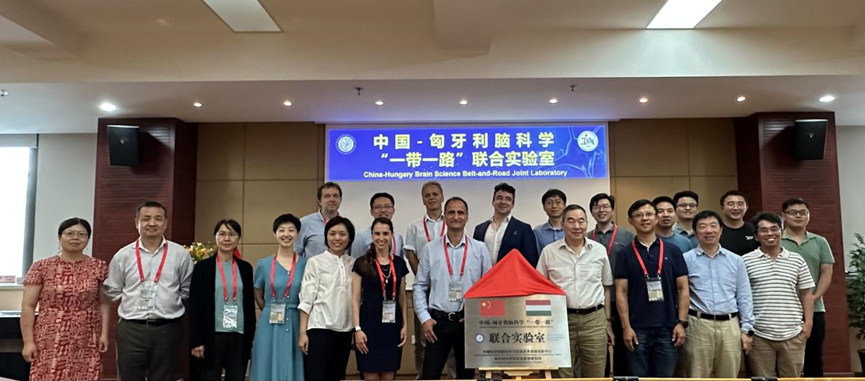News! Annual Meeting 2023 for Sino-Hungary Belt-and-Road Joint laboratory for Brain Science

(Photo credit, Chengjun Zhao & Xiaowen Shen)
Zoltan Nusser, the director of Institute of Experimental Medicine (KOKI) , sent his formal invitations to the Chinese scientists to visit Budapest in the near future in his closing remarks after the scientific presentations. Mu-ming Poo, the director of the joint laboratory for brain science, stressed the importance of international collaborations between Chinese and Hungarian scientists, which could contribute greatly to the international big science projects initiated by China. Scientists from both sides attended the round-table meeting afterwards and discussed the future directions for scientific collaborations with a focus on molecular and circuit mechanisms for brain diseases and mesoscopic connectomes in rodents and primates. Both parties agreed to further support the mutual visits of students, postdocs and investigators in the near future, fostering long-term collaborations between individual labs in China and Hungary.
The Hungarian scientists were immensely impressed by the quality and diversity of research topics in the ION. They felt that there are mutual interests and great potential for collaborations in many research areas. During the visit, many Hungarian neuroscientists have already committed to collaborations with their peers in the ION. The leadership of the Institute of Experimental Medicine in Budapest is fully committed to support these joint Hungarian Chinese interactions. They will host the next joint scientific meeting in Hungary later this year or early next year, which will aim to help the interactions between groups that have already made commitments for joint projects.
Dr. Chun Xu
Lab of Neurobiology of Context and Behavior
Center for Excellence in Brain Science and Intelligence Technology
Prof. Zoltan Nusser
Laboratory of Cellular Neurophysiology
Institute of Experimental Medicine